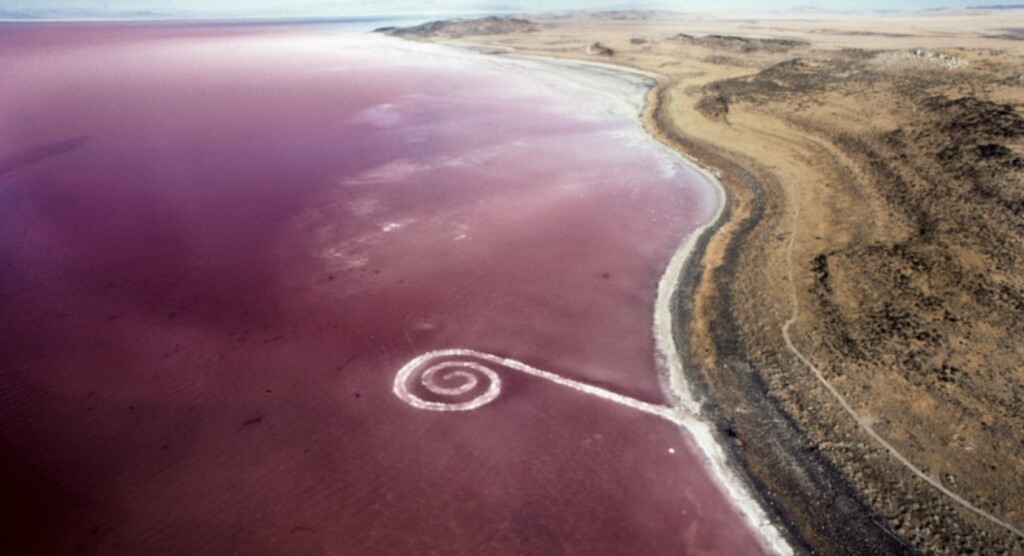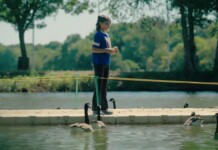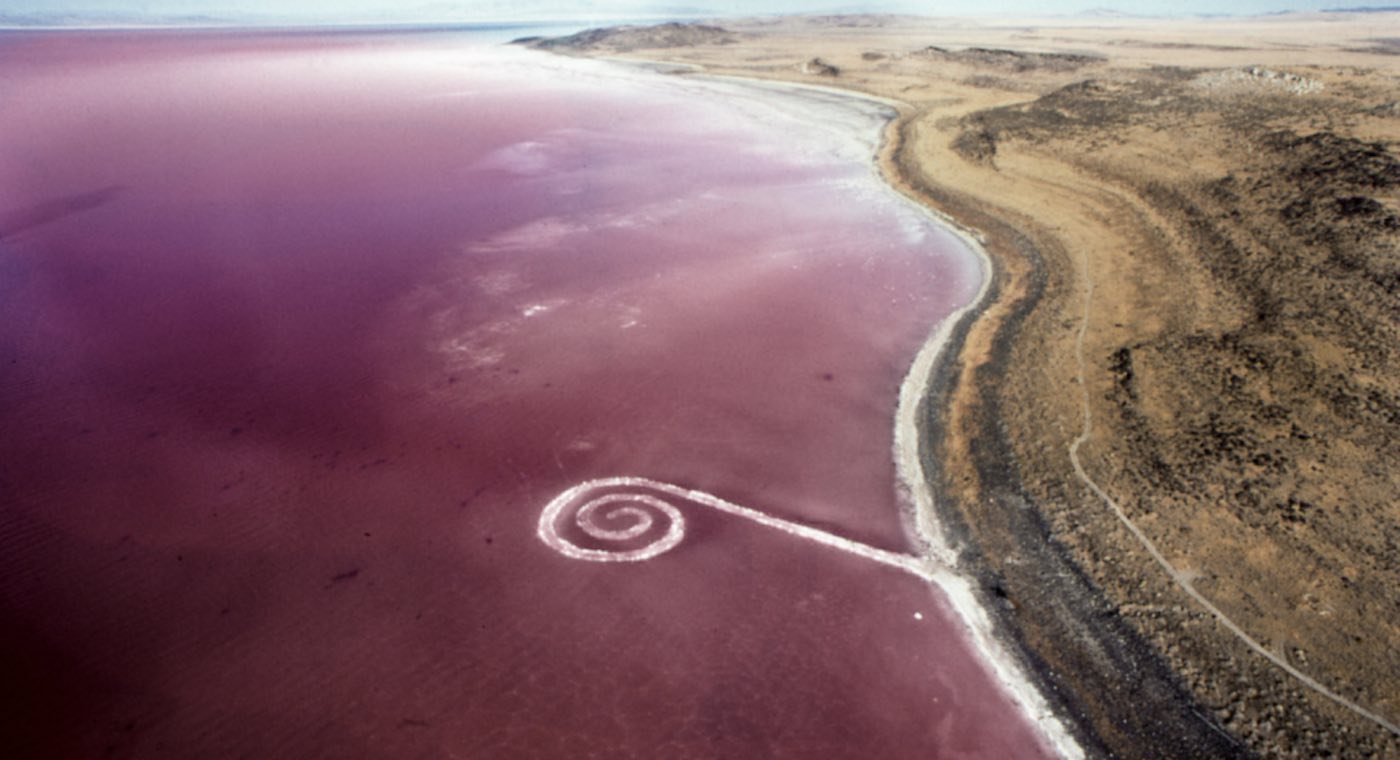
A Utah student decided to dedicate her master’s thesis to the pursuit of getting a historic piece of land art inscribed on the National Registry of Historic Places.
Succeeding on all fronts, ‘Spiral Jetty,’ the famous creation on the shores of the Great Salt Lake, becomes the first feature of the Land Art movement to make it onto the registry.
Getting a property placed on the registry, which protects places of historic significance to America—such as Waldon Pond in Massachusetts—requires permission from the site’s owner or caretaker, and was one of several tasks that Amy Reid, who now holds a master’s degree in landscape architecture from Utah State University, had to accomplish.
Spiral Jetty is a testament to creator Robert Smithson’s enduring fascination with entropy, a statement from the Dia Art Foundation which manages the site explains.
Smithson created the earthwork in the spring of 1970 at Rozel Point, on the northeastern shore of Utah’s Great Salt Lake. Constructed from 6,650 tons of rock and earth gathered directly from the site, the spiral continuously changes form as nature, industry, and time take effect.
A short time after it was completed, the level of the lake rose, and the work was submerged. Over the years it’s re-emerged and been sunk again and again, but since 1997 has always been visible.
Not native to the state, Reid has lived in Utah for the last 15 years, and learned about the Spiral Jetty work from her sister who visited it in 2002 whilst studying art at UC Berkeley. It took several months of work contacting the Dia Foundation, the Utah Department of Natural Resources, and the Holt/Smithson Foundation to explain her mission and gather critical details about the history of the sculpture and its maker.
Unrelated to the famous James Smithson whose endowment created the Smithsonian Institute in Washington DC, Robert and collaborator/wife Nancy Holt were pioneers in the Land Art Movement of the 1960s and 70s. Smithson liked to see in his works something of a dialectic between man and nature.
For this he didn’t like the idea of a work to be permanent or protected. He enjoyed grit, imperfections, and decay, and Reid says her thesis project isn’t about protecting the Jetty forever.
“It really is to provide a formal record of this site in a way that has not been done before,” she told the Salt Lake Tribune in a feature story on the site’s designation.
PRESERVING AMERICA’S PAST: U.S. Is Giving Away Lighthouses for Free to Preserve Them As Historic Landmarks
“For history, for the record, we now have a very complete view of the landscape, the natural forces, the man-made impacts on the landscape—all these things that influenced Smithson to choose this site.”
In a statement, Jessica Morgan, Director of the Dia Art Foundation, said that she and her colleagues are “delighted” the Spiral Jetty has received the important recognition, which “will help us spread awareness of the iconic artwork and advocate for its long-term preservation.”
MORE STORIES LIKE THIS: Historic Homes Being Turned into Heritage Building Materials by These Awesome Savannah Women
“In the fifty-four years that Spiral Jetty has existed, it has been both submerged by the Great Salt Lake and stood far from the lake front, bearing witness to the changing landscape around it,” Morgan wrote.
“Beloved in Utah and far beyond, this artwork has come to mean many things to many people, and we are proud to continue our work caring and advocating for Spiral Jetty to preserve it for generations to come.”
SHARE This Pioneering Work And The Dedicated Student Who Got It Recognized…




















